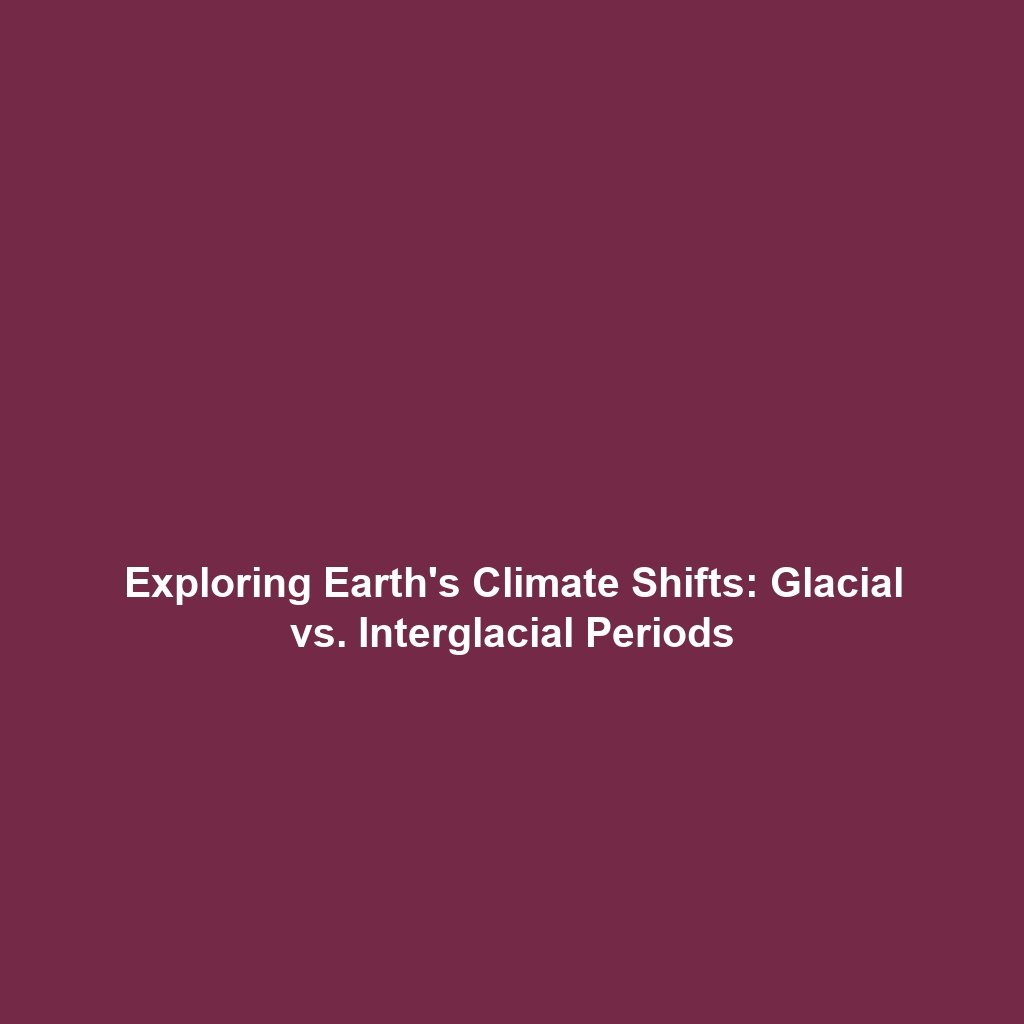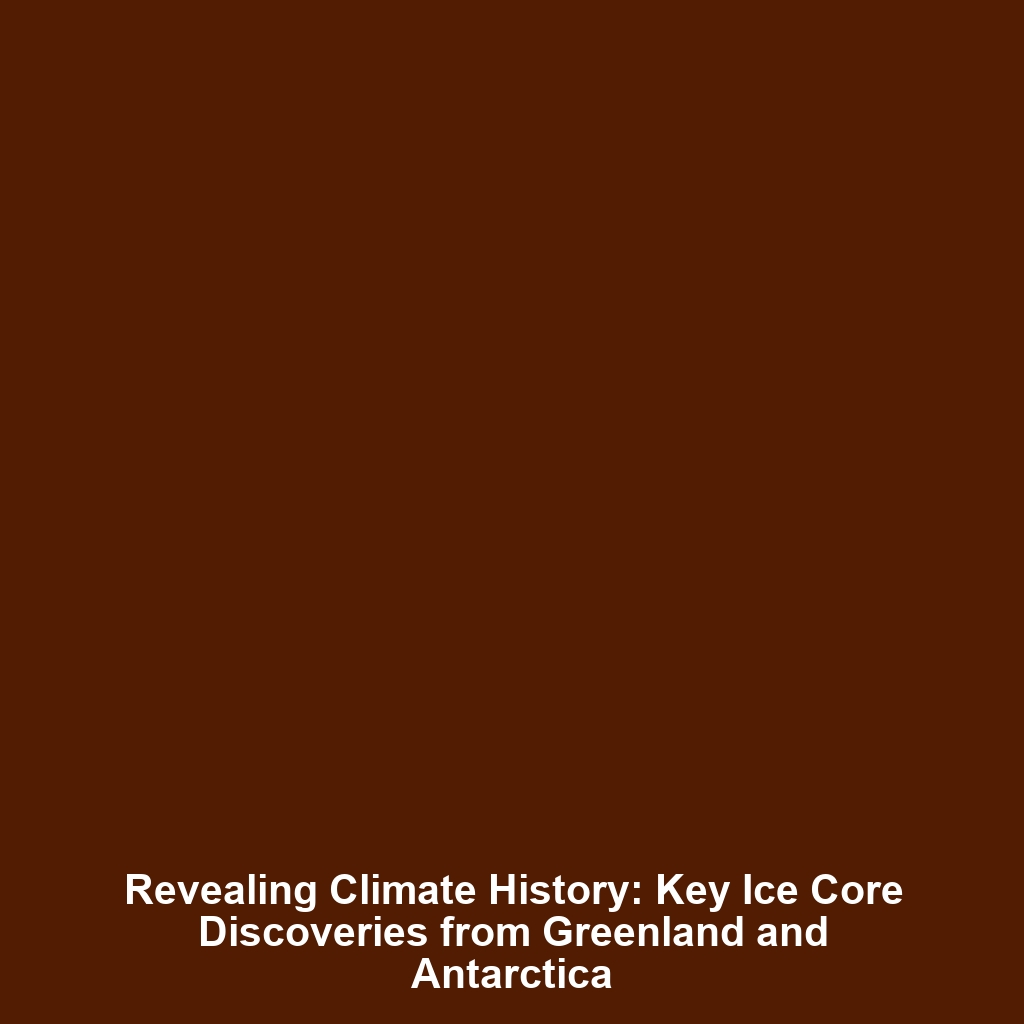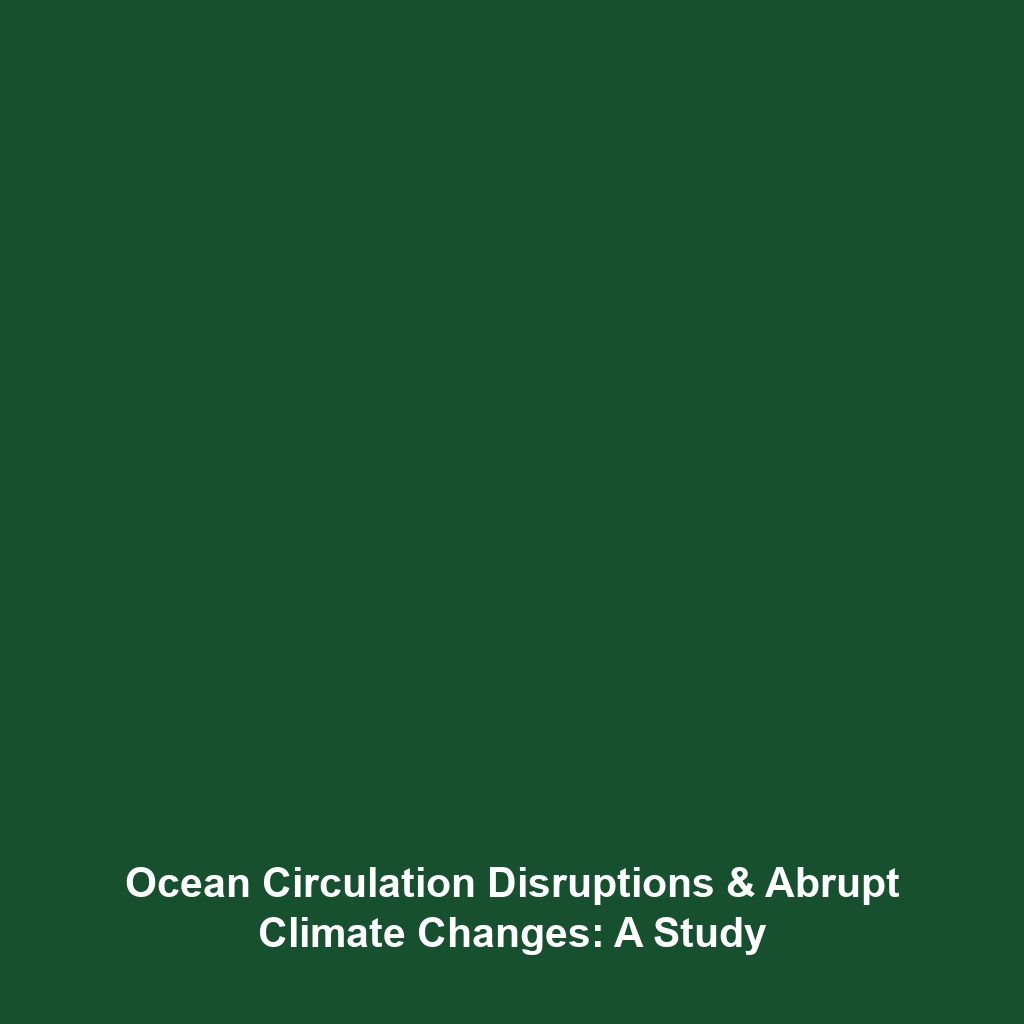Overview: Earth’s Climate History and Milankovitch Cycles
Earth’s climate is a dynamic system that has fluctuated between cold glacial periods and warmer interglacial periods throughout its history. This alternation is predominantly influenced by the Milankovitch cycles—periodic changes in Earth’s orbit and axial tilt affecting the distribution of solar energy received by the planet. Understanding these cycles is crucial, as they play a significant roll in Climate History, affecting everything from sea levels to biodiversity. This article delves into these key concepts, their applications, current challenges, and future research directions related to Earth’s intricate climatic patterns.
Key Concepts:
To comprehend Earth’s climatic fluctuations, several key concepts must be examined:
Milankovitch Cycles
Milankovitch cycles comprise three main orbital variations:
- Eccentricity: Changes in the shape of Earth’s orbit around the sun, occurring over a period of about 100,000 years.
- Axial Tilt: Variations in the tilt of Earth’s axis, influencing seasonal changes over a cycle of approximately 41,000 years.
- Precession: The wobbling of Earth on its axis, affecting climate over a cycle of about 26,000 years.
These cycles interact with atmospheric greenhouse gas concentrations, ocean currents, and ice sheet dynamics, causing significant shifts in global temperatures and precipitation patterns.
Applications and Real-World Uses:
Understanding Earth’s climatic oscillations has practical implications across various fields:
- Climate Modeling: Researchers utilize data on Milankovitch cycles to improve climate models, helping predict future climate conditions.
- Geological Research: Insights derived from climate history guide scientists in studying past climate events and their impacts on geological formations.
- Agriculture: Knowledge of historical climate patterns aids in crop planning and cultivation strategies to combat adverse weather conditions.
The applications of these principles are vital for comprehending how past climates inform current environmental challenges.
Current Challenges:
Despite extensive research, several challenges remain in the study of Earth’s climate history:
- Data Limitations: Incomplete or imprecise data from certain glacial and interglacial periods hampers understanding.
- Complex Interactions: The complex interactions between different climatic factors make it challenging to isolate the effects of Milankovitch cycles.
- Predictive Uncertainty: Difficulties in predicting future climate changes due to unforeseen factors such as human activity and rapid technological development.
Future Research and Innovations:
Future research on Earth’s climate is expected to yield groundbreaking insights:
- Advanced Climate Models: Innovations in computational technologies will enable more accurate simulations of climatic scenarios.
- Paleoclimate Studies: New techniques in paleoclimatology will enhance the understanding of past climate systems, informing our future.
- Interdisciplinary Approaches: Combining climatology with other disciplines such as sociology and environmental science will lead to more holistic climate strategies.
Conclusion:
In summary, Earth’s climate history, characterized by its alternation between glacial and interglacial periods driven by Milankovitch cycles, significantly shapes our understanding of current climate dynamics. As research progresses, the insights gained will be instrumental in addressing ongoing and future climate challenges. For more information, explore our other articles on climate factors and future climate predictions. Stay informed and engaged with the complexities of our planet’s climate history.


